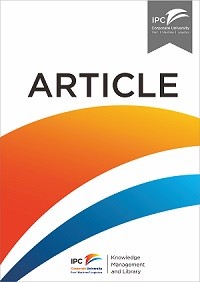Article
Cruise market: stakeholders and the role of ports and tourist hinterlands
The cruise industry has been dynamically advancing over the last decades with an average annual growth rate in the worldwide number of cruise passengers of 7.84 per cent between 1990 and 2013. The Mediterranean Sea is the second cruise destination worldwide. The cruise market is characterized as an oligopoly within the subsector of cruise companies. A similar situation occurs in the Mediterranean homeports, in which a small number of ports account for a high percentage of home in/out passengers. With respect to the port of call segment, there are a large number available in the Mediterranean. The empirical analysis of the determinants of cruise traffic registered by a port is presented in this article, and the Spanish Mediterranean cruise ports are analyzed. To conduct the empirical analysis, principal component methodology and ordinary least-squares regression are used. The explanatory variables are related to the tourist attractiveness, the port infrastructure and port costs. The primary results of the study associate the number of cruise passengers with the attractiveness of the port hinterland, the port infrastructure and the management of port facilities.
Ketersediaan
Informasi Detail
- Judul Seri
-
Maritime economics & Logistic
- No. Panggil
-
ATC PO EST c
- Penerbit
- United Kingdom : Palgrave Macmillan., 2015
- Deskripsi Fisik
-
18 p.
- Bahasa
-
English
- ISBN/ISSN
-
1479-2931
- Klasifikasi
-
PO
- Tipe Isi
-
-
- Tipe Media
-
-
- Tipe Pembawa
-
online resource
- Edisi
-
Vol. 17, 3
- Subjek
- Info Detail Spesifik
-
-
- Pernyataan Tanggungjawab
-
Esteve-Perez, Jeronimo
Versi lain/terkait
| Judul | Edisi | Bahasa |
|---|---|---|
| Business failure: incidence of stakeholders’ behavior | Vol. 27 No. 1, 2014 pp. 75-91 | en |
| The role of port size and incentives in the choice of location by port users A game-theoretic approach | Volume 26 | en |
| Analysis of consumer characteristics which influence the determinants of buying decisions by the logistic regression model | Volume 14 . Number 3 . 2001 | en |
Lampiran Berkas
Komentar
Anda harus masuk sebelum memberikan komentar

 Karya Umum
Karya Umum  Filsafat
Filsafat  Agama
Agama  Ilmu-ilmu Sosial
Ilmu-ilmu Sosial  Bahasa
Bahasa  Ilmu-ilmu Murni
Ilmu-ilmu Murni  Ilmu-ilmu Terapan
Ilmu-ilmu Terapan  Kesenian, Hiburan, dan Olahraga
Kesenian, Hiburan, dan Olahraga  Kesusastraan
Kesusastraan  Geografi dan Sejarah
Geografi dan Sejarah